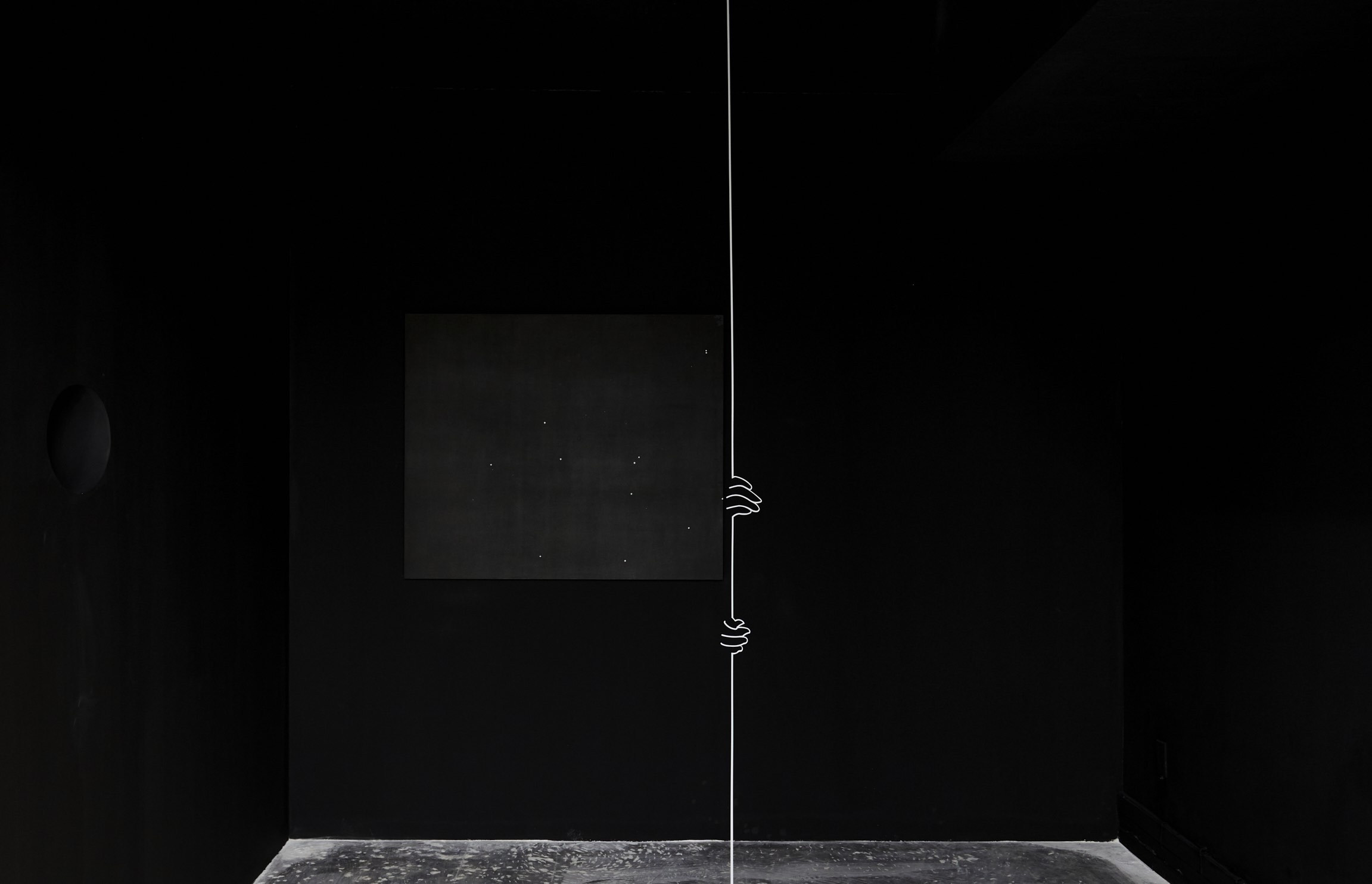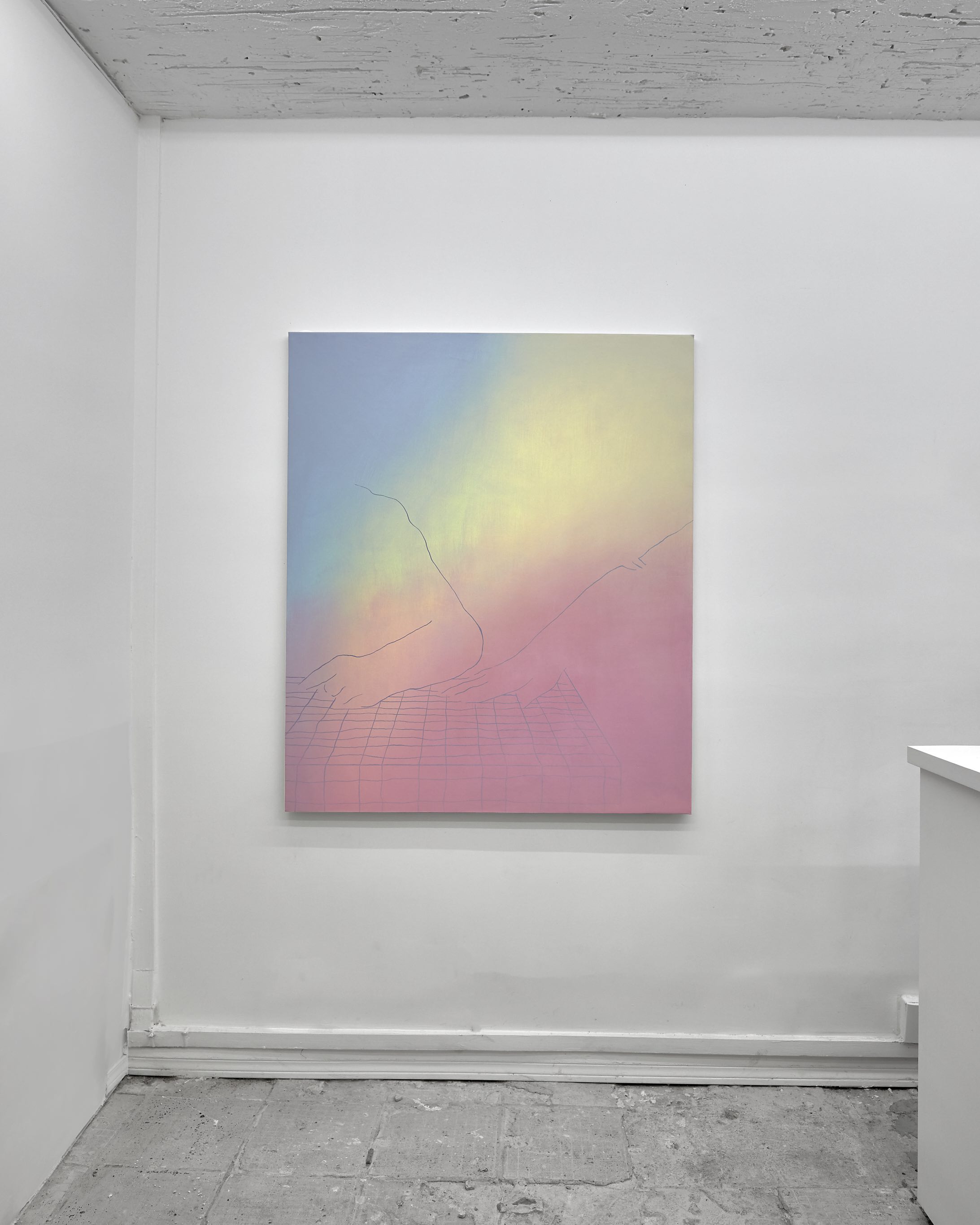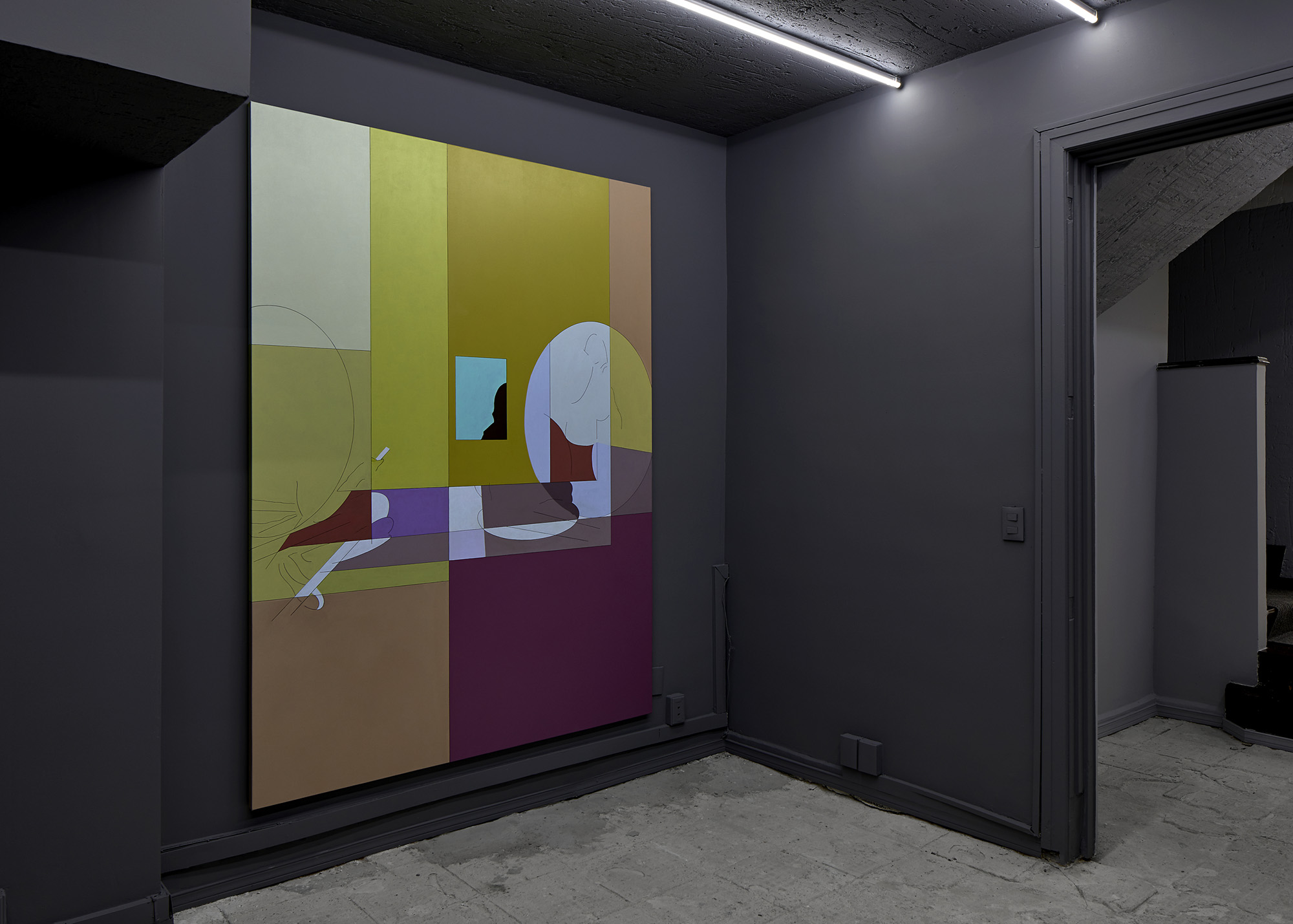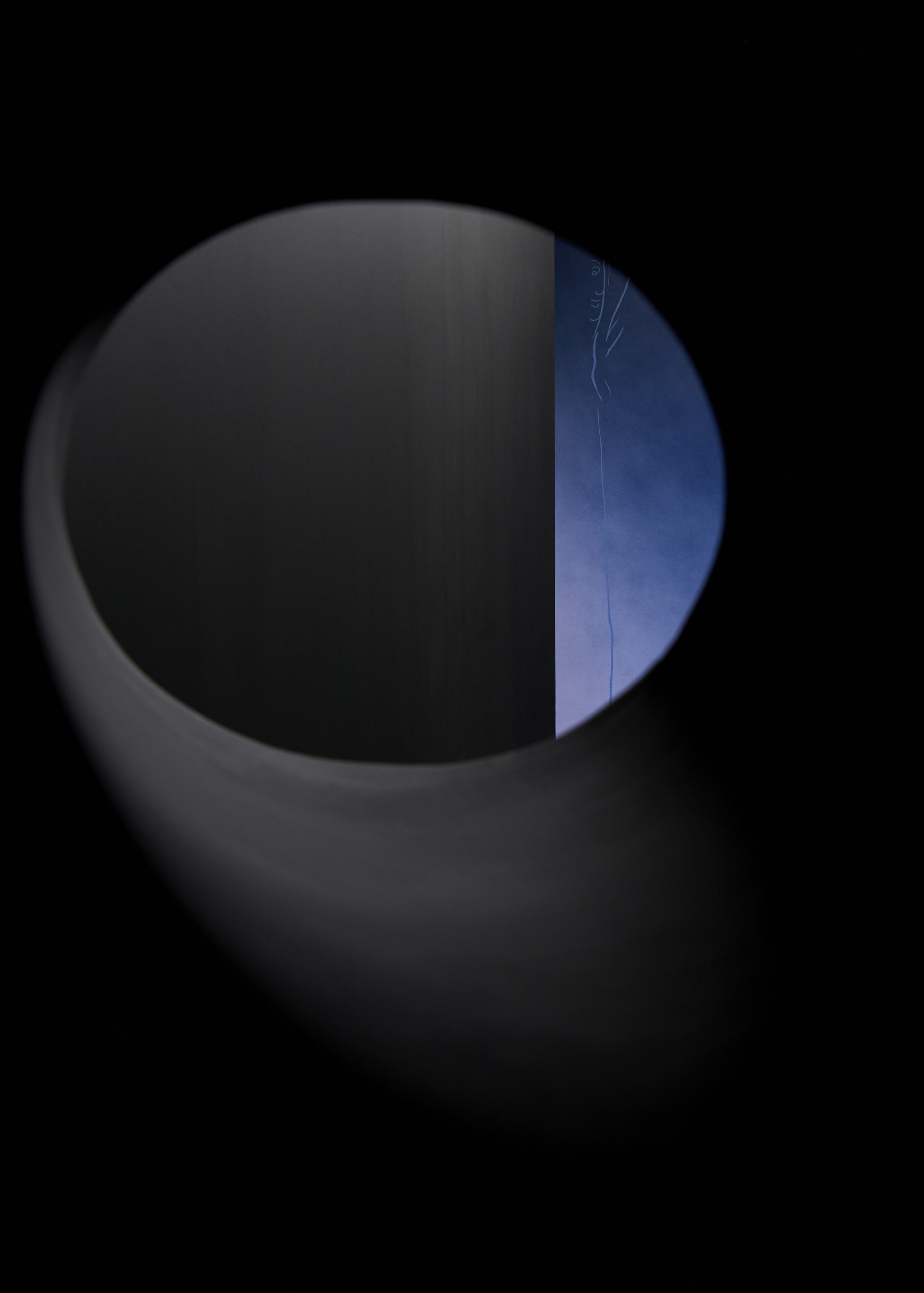
Review
Pigments of the Screen: Leo Marz at Pequod Co.
by Sandra Sánchez
Reading time
4 min
A pair of hands sinks into a soft and unstable grid falling like a cascade into a space inaccessible to our view. The orthogonal lines aren’t there to fulfill the function—inaugurated in the Renaissance—of leading our eyes to a single vanishing point; rather, the successions of points and contours are situated on a surface blurred from top to bottom, from blue to yellow and finally to pink. The space sustaining the action abandons any possibility of specific location in favor of a background reduced to vibrations of color. The painting is titled Aparezco como un me gusta (“I Appear as a Like,” 2020) and forms part of El último bufé (“The Last Buffet”), an exhibition by Leo Marz at Pequod Co.

Even if painting time and again presents hybrid spaces that don’t always correspond to reality*1 (on the contrary, they modify and update it), we can place Mark’s work within the shadow of a digital reference; specifically, and in his own words, in relation to Tumblr surfaces and their variations before the uploading of an image.
In the middle of this conversation, and along the same line, there appears the memory of faces illuminated at night only by the light of a tablet: How has technology changed the lighting of our bodies? Is the light of reason now stored in external memories?
In the other pictures color doesn’t function as a background, but rather as a surface illuminating the barely drawn figures, the silhouettes that fragmentarily inhabit the canvases. Hence, the compositions share in something of the divine, immeasurable, and gilded space of Byzantine art.

El internet mata la escapada (“The Internet Kills the Getaway,” 2020) shows stacked blocks of color divided by lines that in their thickness reveal the rusted red background, also present behind each of the canvas’s colors. The lines not only separate the blocks, but also trace silhouettes of fragments of bodies looking at a screen or disclosing parts of themselves through a rectangle that suggests a window. We are facing impressions in which sunlight loses its relevance to the blue light that emanates from contemporary technological devices: eyes that are fatigued more than dazzled.
Thus, spaces constructed by means of color abandon any sentimentalist or spiritual pretense in favor of material reflection on their online use. The compositions signal in pigment colors the effects of light colors on our imaginary: it seems as though time loses its intervals, its minutes, before the screen-space and its immense flow, always being updated—in the scroll, the glitch, and the hyperlink.
Reflections on color and digital illumination aren’t new to Marz’s work; they appear in such previous series as #cc, Monolito, and Las batallas del display (“The Display Battles”). But while on those occasions their importance was secondary in comparison with the pictures’ forms, here they’re the connecting thread of the entire exhibition.

In a paradoxical trajectory, the first thing we see is also the last thing before which we find ourselves standing face-to-face. The complicity between space and minimal contours becomes three-dimensional in La superficie como umbral (“The Surface as Threshold,” 2020), whose dark background holds at the center a canvas bearing a starry cape. Outside this plane and a few steps away we find a white, lightweight sculpture from floor to ceiling (one that closely resonates with Fred Sandback’s work*2) consisting of just a line, tracing in the center two groups of four fingers: the thumbs disappear as though on a keyboard.
_copy_2.jpg?alt=media&token=927667e6-01c0-4fbb-a4c5-e02572dd92a7)

Upon entering the gallery, our first glance at the horizon generates a trompe-l’oeil, as from near to far these hands reduce their distance before the surface, giving the impression of unity with the background; however, at the end of the tour and in getting closer, we realize that the piece is rather a stage inviting us to traverse between the darkness of the sky illuminated by points of light and the vertical line: Who’s on the other side to make sure that our contours have not melted away?
The exhibition will be open until November 7. Schedule your appointment here.
*1 For an analysis of the spatial changes in painting from antiquity to the modern world, see Erwin Panofsky’s Perspective as Symbolic Form.
*2 Fred Sandback (New York, 1943-2003) was a minimalist sculptor who reduced matter to colored threads in order to make pieces that transformed the space, demonstrating silhouettes of simple shapes. Some of these cut through the exhibition spaces using one or more vertical lines. For more information, see: https://www.fredsandbackarchive.org/
Published on October 31 2020